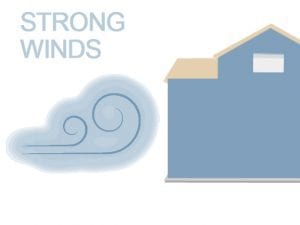3 Factors That Impact Steel Building Costs
Once upon a time, steel buildings were more or less basic metal boxes primarily built for industrial use. Through the years, advances in technology have transformed prefabricated metal or steel buildings into completely customizable structures that can be designed and built to accommodate practically any application or use.
Anyone that has ever priced prefabricated building suppliers has likely noticed price fluctuations from one to the next. This is because there is no standard steel building pricing list. Actual cost is largely dependent on the structure’s size, intended use, and location. Other factors such as supply and demand or the supplier you choose will also affect a building’s price.
Here are three factors that significantly impact the total cost of a metal or steel building.
Location & Design
Two big determinations of the price of a steel building are its location and design/build.

For example, a metal or steel building built along the coast must be engineered to withstand more than 90 mph of straight-line winds since hurricanes are always a threat. This is an example of location mattering.
Open wall steel buildings – also known as roof-only steel structures – must also be built to withstand high winds since no other walls are there to deflect high gusts. If winds are high enough, the roof could be torn completely off the structure without the right wind load capacity. This is an example of design mattering.
Similarly, a building built for a region with a lot of snow – let’s say Alaska – will
need to be built with a roof capable of withstanding a heavy snow load. However, someone getting an estimate for a steel building in Los Angeles isn’t worried about its snow load but they’ll need it to withstand extreme seismic conditions. California has stricter regulations pertaining to seismic design since earthquakes are more prevalent and
someone getting an estimate for a steel building in Los Angeles isn’t worried about its snow load but they’ll need it to withstand extreme seismic conditions. California has stricter regulations pertaining to seismic design since earthquakes are more prevalent and
destructive there
Naturally, these reinforcements require the use of more steel, which will increase costs. These factors, along with design components like the building’s width, height, and roof pitch, all play a role in determining how much steel is needed and the overall cost of building a steel structure.
Supply & Demand
Steel is a global marketplace commodity like oil. Its price is therefore determined by supply and demand throughout the world. Steel prices are lower if supply is high but demand is low. Prices go up when supply is down and the demand is higher. Economic booms and downturns, the state of the construction industry, and natural disasters requiring large-scale rebuilds are other contributors to fluctuations in steel supply, demand, and pricing.
Where Your Steel Comes From
If you’re ordering a prefabricated building from a company that imports its steel from overseas, prices may be lower but there’s a tradeoff when it comes to quality. You ideally want to work with a supplier that uses only the highest-quality American-made steel.
Additionally, a large supplier of a product or commodity with established relationships within their given industry levies considerable buying power. This purchasing power can be used to pass savings onto their customers. The best deals often come from a supplier that goes a step beyond just designing and delivering a prefabricated metal or steel building. Those offering complete steel building construction services typically have the most buying power to negotiate the best pricing. Learn more about what affects steel building price by browsing through our features and options.
